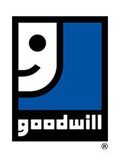“I’m job hunting and attending lots of career fair and networking events. A friend told me I should get business cards to hand out to people, but I don’t know where to start. Can you help me?” Katie from Nashville, TN
Business cards specifically used for job searching and networking—also known as networking cards—can be a great tool in your arsenal for connecting with employers, recruiters and anyone else who may be able to connect you with a new position. Think of your networking card as your short-form résumé. In situations where carrying and handing out 8.5” x 11” papers may be unwieldy, use a networking card instead. These tools can work in tandem to help you land a job.
Similar to a business card, your networking card should have your contact information—name, city, state, phone number(s), e-mail address, and website or LinkedIn profile URL. However, whereas business cards list your current job title, networking cards briefly describe your experience or what type of job you are looking for.
But how are you supposed to condense a full page or two of information onto a 3” x 2” card? This is where you’ll need to get creative.
Depending on your qualifications and experience, one of the following options may work for you:
- Create a tagline—Consider this as your elevator pitch written out. Come up with a brief phrase that describes your qualifications and the job you are looking for. For example, “Award-winning web designer,” “Certified diesel mechanic” or “Service-minded sales professional with a track record of closing the deal.”
- List your qualifications—Networking cards have two sides, so consider using both to avoid clutter. While the front will display your contact info and tagline, the back can list a few key qualifications that make you stand out from the crowd.
- Leverage technology—Rather than adding a lot of text to your card, perhaps you want to direct people to your website, online portfolio or résumé, or LinkedIn profile. Consider using a QR code to quickly get people from point A to point B using their smart devices.
Once you decide what to put on your cards, it’s time to design and print them. There are a number of online companies that offer cheap, or even free (you just pay shipping and handling), business cards. Alternatively, you can order them from local print shops or even print them at home with online templates and blank cards purchased from an office supply store.
When selecting or creating a template, remember that simple is best and white space will help draw your reader’s eye to the important information. It’s always good to have another person review your work, too, to make sure there aren’t any mistakes.
Once you have your cards in hand, consider purchasing a business card holder to keep them pristine. Handing out a wrinkled or torn card does not make the best first impression.
At networking events, career fairs or even your local coffee shop, have your cards handy to give to anyone who may be able to help you find a job. Practice naturally integrating your elevator speech and business card delivery into conversation.
The following are great opportunities for handing out your card:
- When you are offered a card or additional information
- When someone asks for your contact information
- When someone expresses interest in something you’ve said and wants to learn more
- When you meet someone who would be a good addition to your network—someone in your desired field or at a company where you’d like to work or someone who knows someone who can help you
Lastly, consider giving your family and friends a handful of your cards to pass along if they meet people who can help you. You never know where your next job will come from!



